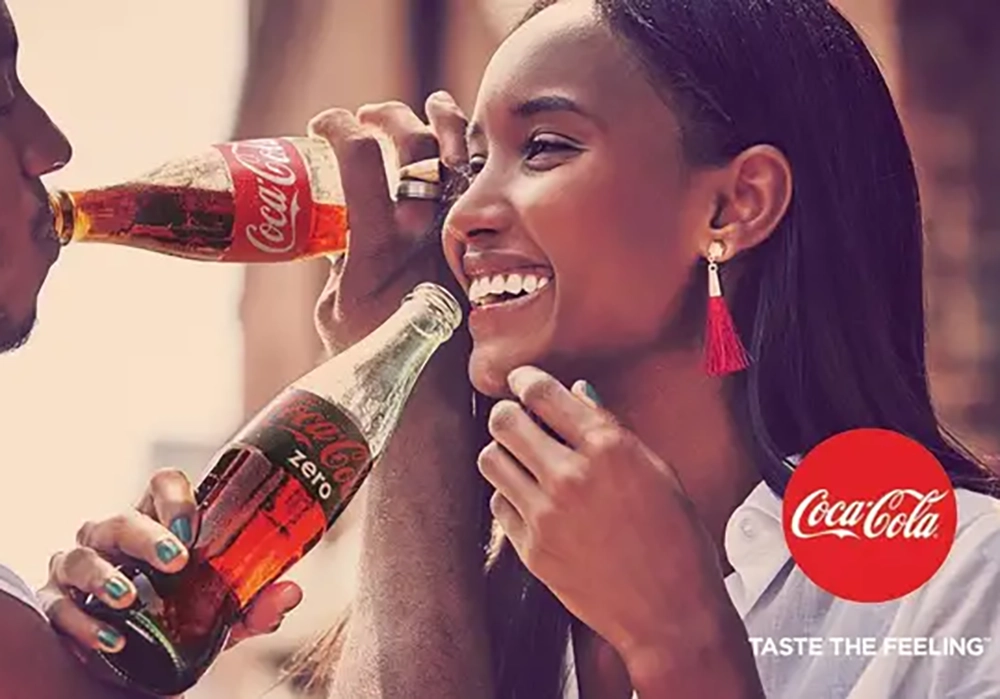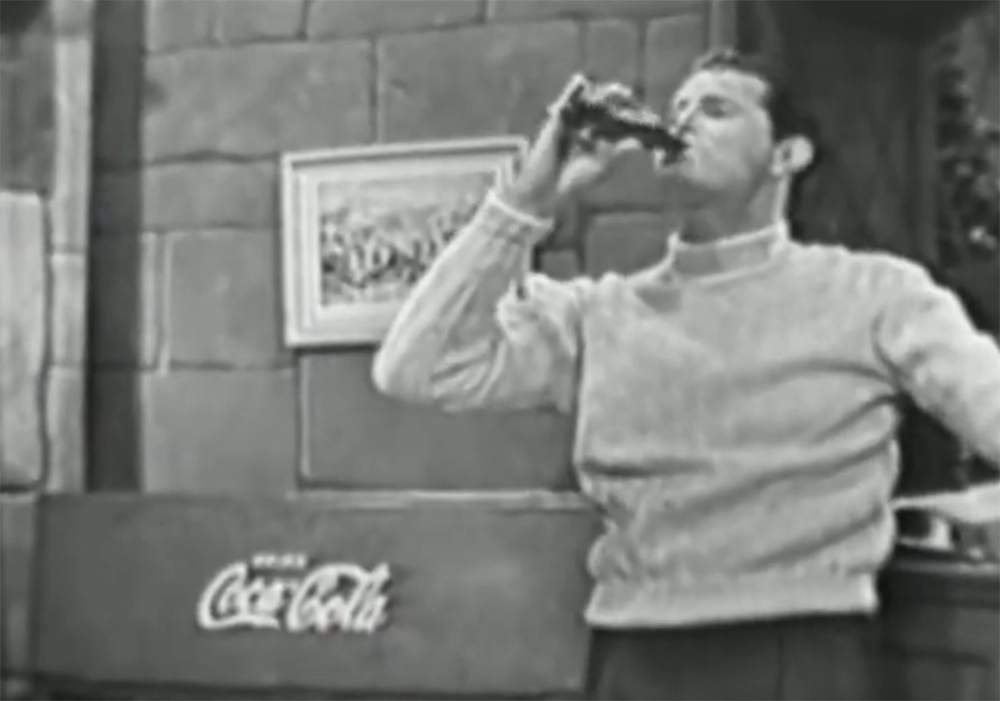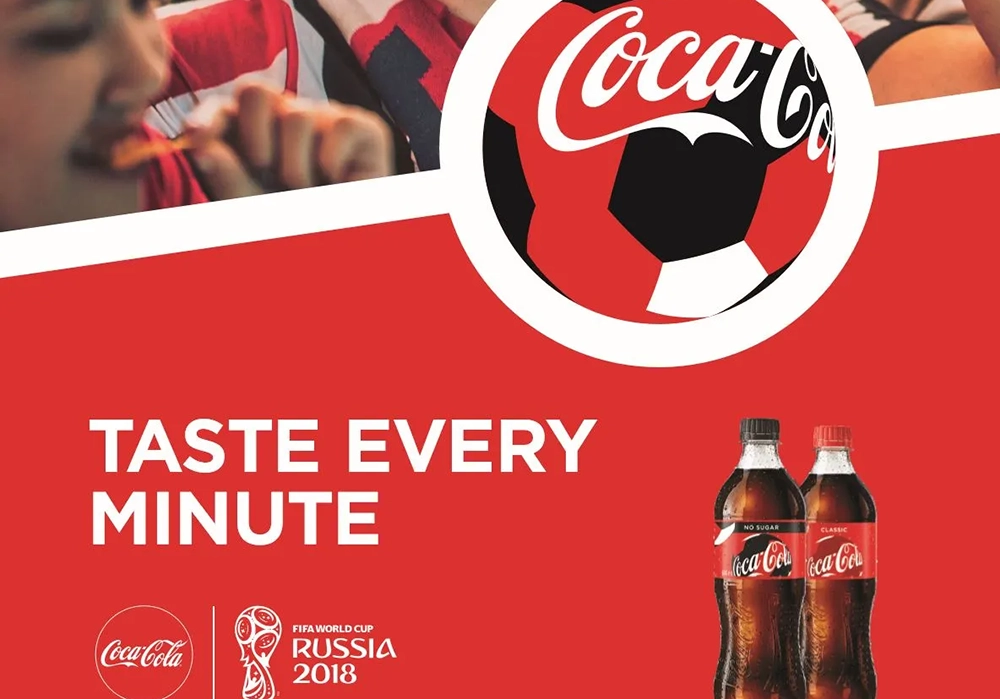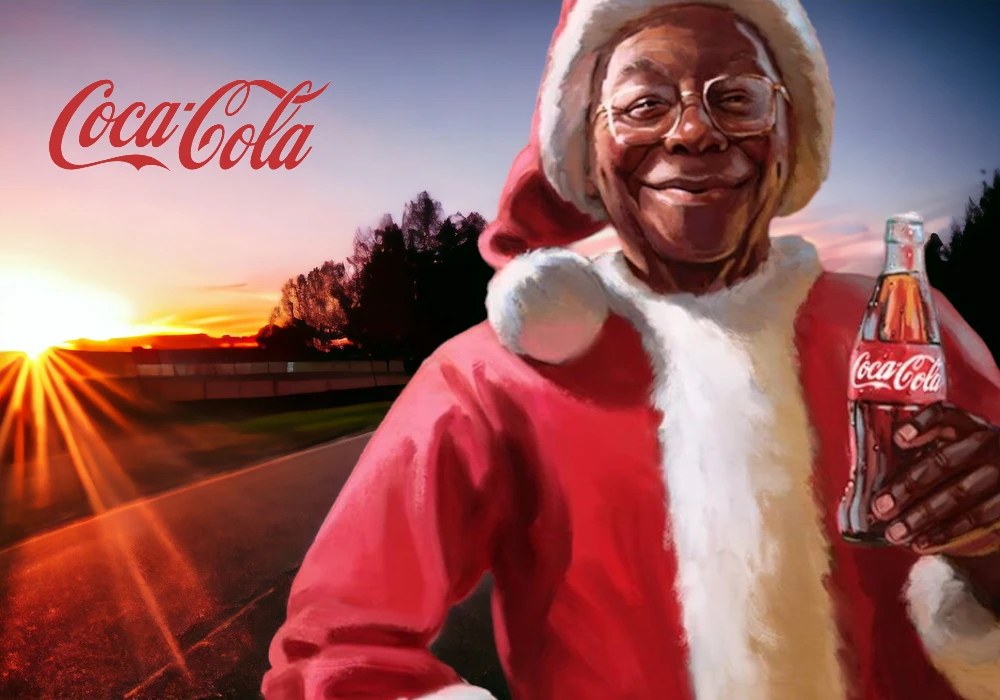Coca-Cola is one of the most recognizable brands in the world. It has undoubtedly mastered the art of marketing. It started in an Atlanta pharmacy. Now, it is a global beverage giant. The company’s journey has been marked by a series of iconic TV commercials. They have left an indelible mark on popular culture.
Who doesn’t remember the catchy “I’d Like to Buy the World a Coke” jingle? Or the heartwarming “Holidays Are Coming” ads? They signaled the arrival of the festive season. Coca-Cola’s TV campaigns have changed with society. They reflect each era’s spirit while always supporting the brand’s core values.
Let’s stroll down memory lane. We’ll explore how Coca-Cola’s TV ads shaped its brand over the decades, transitioning from classic soda to include diet coke and other variants in its portfolio.

Key Takeaways:
- Coca-Cola’s famous TV ads have changed over time. They now reflect societal changes. But, they also keep reinforcing the brand’s core values.
- The campaigns have changed. They moved from establishing brand personality to being edgy and rebellious. Then, they were family-friendly and inclusive. Now, they are purpose-driven and sustainable, reflecting a shift in global soda consumption trends.
- Coca-Cola has mastered the art of using celebrity endorsements, partnerships, and trends. They use these advertisement strategies to keep its brand relevant and relatable.
- The brand can change its marketing strategies. It does this while staying true to its essence. This strategic use of advertisement has led to its enduring success.
The Early Days: Establishing Brand Personality
In the 1950s, Coca-Cola launched its “The Pause That Refreshes” campaign. It positioned the beverage as a refreshing break from daily life. The iconic images showed idyllic American scenes. The groups included families picnicking. Workers took a well-deserved sip of Coke during their lunch breaks.
“The ‘Pause That Refreshes’ campaign captured the essence of Coca-Cola. It portrayed it as a simple pleasure. It brought moments of joy and renewal,” said marketing expert Jane Doe.
Building on this start, the 1960s saw the start of the “Things Go Better with Coke” campaign. It linked the brand to happiness and positivity. The commercials featured many different people. They were from all walks of life and were enjoying Coca-Cola. The ads reinforced the idea that the drink brought people together.

The “Mean” Era: Edgy and Rebellious
The counterculture movement grew in the 1970s and 1980s, influencing Coca-Cola’s advertisement direction. Coca-Cola took on a bolder, rebellious tone with campaigns like “Coke Is It” and “Coke Is the Real Thing.” These ads targeted the youth market. They featured young people breaking conventions and challenging norms.
I vividly remember the edgy Coca-Cola commercials from my teenage years. They captured the rebellious spirit of the times. They made the brand feel cool and rebellious.
The “Warm and Fuzzy” Approach: Family-Friendly and Inclusive
In the 1990s, Coca-Cola took a more nostalgic and family-friendly approach. They made campaigns like “Always Coca-Cola” and “Holidays Are Coming.” These heartwarming commercials stressed the brand’s ability to unite people. They created cherished memories and traditions.
The 2000s saw this positive messaging continue. Campaigns like “Open Happiness” and “Share a Coke” were prime examples.” The latter was a game-changer. It let consumers personalize their Coca-Cola bottles and cans with names and phrases. This fostered a sense of connection and ownership.

The Modern Era: Purpose-Driven and Sustainable
In recent years, Coca-Cola has aligned its marketing with social and environmental causes. This reflects the rising importance of purpose-driven branding in the cola wars. Those campaigns include “Taste the Feeling” and “A Coke Is a Coke”. They celebrated the joy of drinking Coke, and also promoted diversity and sustainability.
The “Real Magic” campaign launched in 2021 took this approach a step further. It highlighted the brand’s commitment to a better future. The commitment comes through initiatives, like the World Without Waste program. The program aims to collect and recycle all the bottles and cans it sells by 2030.

Celebrity Endorsements and Partnerships
Coca-Cola has had one of its most successful marketing strategies. It has been to use celebrity endorsements and partnerships. It has featured iconic figures like Marilyn Monroe and Elvis Presley. It has also featured modern-day superstars like Taylor Swift and Selena Gomez. The brand has consistently aligned itself with pop culture icons. This is to stay relevant and relatable in the competitive soft drink market.
Partnerships with major sporting events, like the Olympics, FIFA World Cup, and NBA, have also helped Coca-Cola position itself. They have made it a brand linked with excitement and energy.

The Enduring Power of Coca-Cola’s Marketing
Coca-Cola can adapt its marketing to changing trends and consumer preferences. This has been key to its lasting success. The brand has stayed ahead of the curve. It adopts new tech and platforms while staying true to its essence.
The iconic “Hilltop” commercial aired in 1971. It featured a diverse group of young people singing about buying the world a Coke, an iconic soft drink. From that to the personalized “Share a Coke” campaign, Coca-Cola has tapped into the spirit of each era. They create campaigns that touch audiences deeply.
“Coca-Cola’s marketing campaigns are about more than just selling a product,” said branding expert John Smith. They’ve been about creating emotional connections. They’re about shared experiences that go beyond the beverage itself.”
The brand is evolving. It’s clear that Coca-Cola’s marketing skill, even when compared to Pepsi, is not slowing. The brand has its finger on the pulse of popular culture. It is committed to staying relevant and purpose-driven. The iconic brand is ready to keep captivating audiences for generations.
FAQ:
- What was the first Coca-Cola TV commercial, and how did its logo feature? The first Coca-Cola TV commercial aired in 1950. It featured an animated character named Sprite Boy.
- What is the most iconic Coca-Cola TV commercial? Many consider the 1971 “Hilltop” commercial iconic. It featured a diverse group of young people singing “I’d Like to Buy the World a Coke.”
- How has Coca-Cola’s marketing strategy evolved over time? Coca-Cola’s marketing has changed. It used to be about brand personality and linking Coke with happiness and positivity. Then, it got edgier and more rebellious. But, it later turned to family-friendly and inclusive messaging. Now, it supports social and environmental causes.
- What role have celebrity endorsements played in Coca-Cola’s marketing? Celebrities have endorsed Coca-Cola. This helped keep the brand relevant and relatable. The brand has partnered with icons. These include Marilyn Monroe, Elvis Presley, Taylor Swift, and Selena Gomez.
- How has Coca-Cola adapted its marketing strategies to new technologies and platforms? Coca-Cola has always embraced new technologies and platforms. It started with TV commercials and billboards. Now, it uses digital marketing, social media campaigns with influencers, and experiential marketing to appeal to the next generation of cola drinkers.
Tips:
- Pay attention to the visuals. These include the iconic Coca-Cola bottle and the distinctive red and white branding. They have been crucial in the brand’s marketing.
- Look for cultural references and history in the commercials. Coca-Cola has often tapped into trends and zeitgeists.
- Notice how the campaigns have evolved to reflect evolving consumer preferences, including a shift towards diet coke and other variant logos. But, they have kept a consistent brand identity.
- People appreciate the emotions and stories in the commercials. These strategies have helped build deep connections with audiences, elevating Coca-Cola beyond just a soda.




Leave a Reply